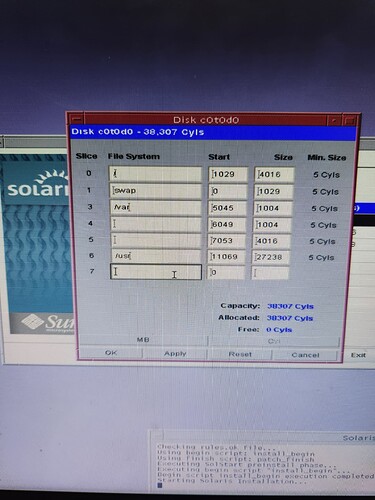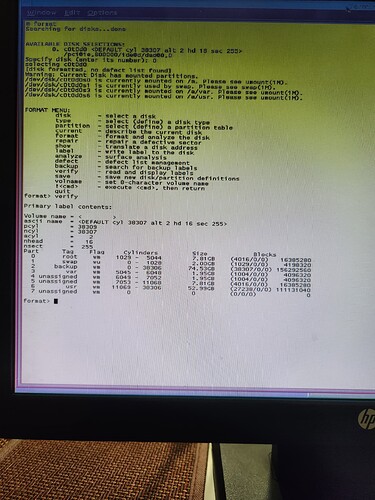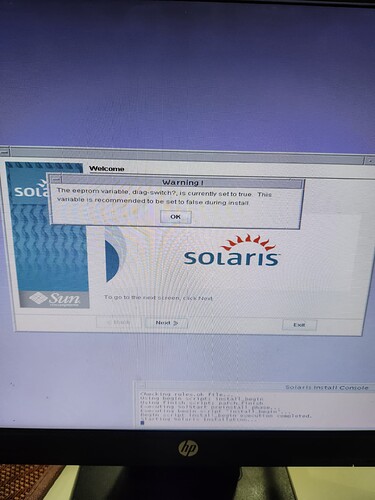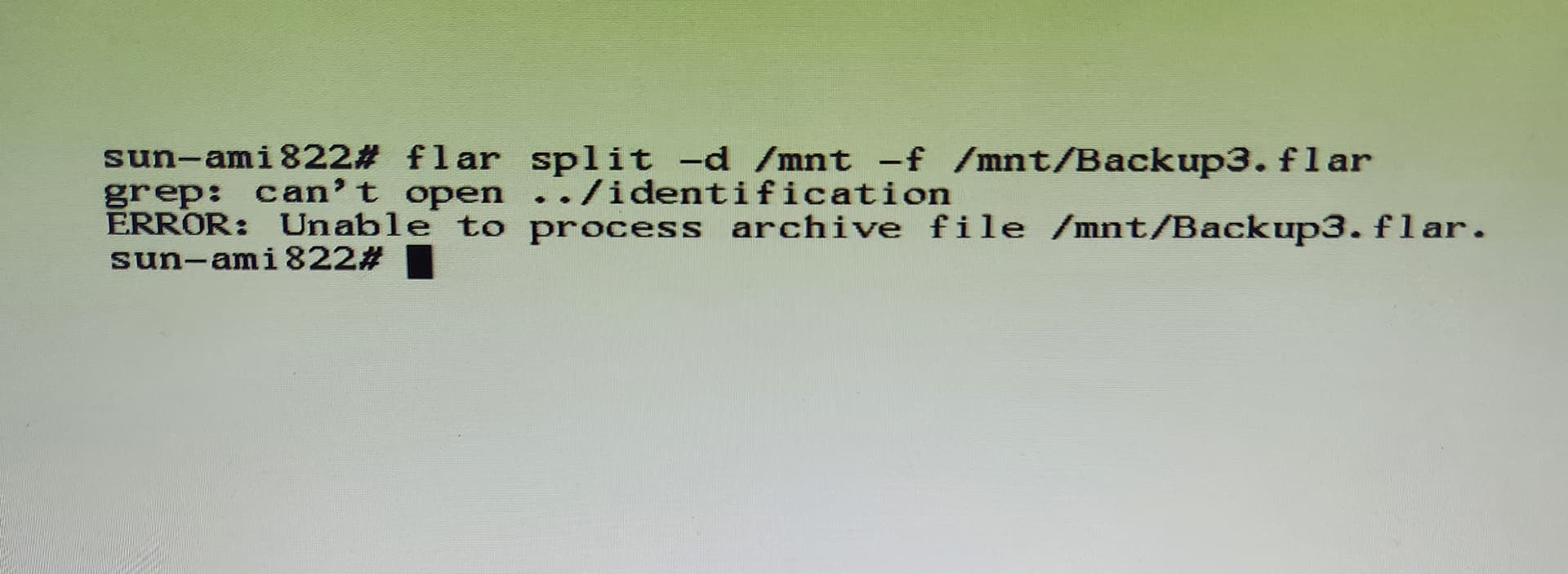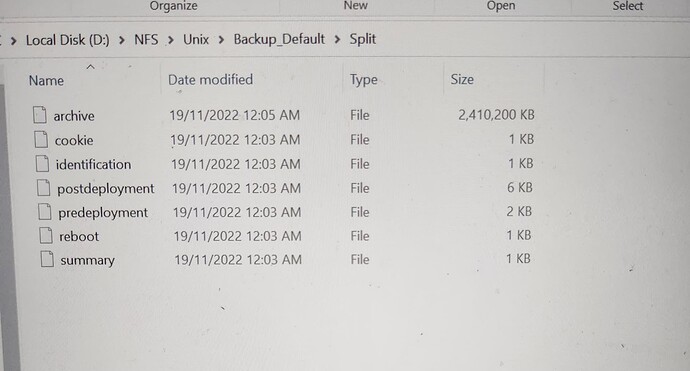So if the proposed VTOC didn't look right, that's your problem. If it offers you to edit it, do that.
Here's a thought. Since the proposed VTOC isn't correct, try a flar create with include switches for /var and /usr. The sooner you can split the archive and list the cpio part to see what it's really archiving the better, I think. The flar create without include/exclude should archive the whole system but perhaps yours is omitting the non-root filesystems. So try explicitly including them
And... obviously you can create a flash on the good machine, then immediately split the flar on the good machine, then immediately list the cpio archive on the good machine to see what files the flash archive contains. Then try a flash install on the bad machine.
Read the man pages for command arguments.
CORRECTION to previous post:
May I add that, if the flash archive is compressed (which yours is), after splitting the flash archive, that should be:
# cat <cpio archive component> | uncompress | cpio -ivt
I've got my hands on a 160 GB HDD.
I couldn't even touch the machine today.
Tomorrow, I will follow every point you mentioned.
UUOC (Unless use of Cat), avoid cat with
zcat <cpio archive component> | cpio -ivt
My update so far...
I have found another disk with the exact cylinders count as in the good disk.
I set VTOC exactly as it is in the good disk and you can refer to the photo below.
Again, it countinued completed the installation with a failed archive extraction and giving the exact same error log.
Can you (1) try splitting the flash and listing the cpio component, and (2) try creating a flash explicitly including /var and /usr.
I'm going back to the good machine in a moment.
I apologize if the syntax is wrong.
This is the result of several syntax attempts that resulted with an obvious syntax error.
I searched and looked for examples on the web. Honestly it seems there isn't much resources or atleast useful examples out there. Usually, I'm known to be deep and get results in research. But I’m not in my game when it comes to Solaris.
My minimum command would look something like this:
# flar -s -d <destination directory> <full path to flash archive>
So I would say that your full path to flash archive argument looks fine.
You need to specify a directory where you want the split components dumped. I normally create that directory especially for the purpose, and insure that it pre-exists before I specify it on the command line. Don't expect the split command to create the target directory. Do it yourself. Make sure that you have write access to it (which you should do if you create it and you own it).
Summary: Create you own target directory for the purpose called anything you like and place that path on your command line after '-d'
If that still fails post back.
EDIT: Just noticed your '-f' switch. Take that out. See my example.
I was thinking of placing the split archives on NFS server space...so, in other words, you're saying I should allocate some space in the good disk to place the split archives in it.
So try creating a directory under /mnt
# cd /mnt
# mkdir dumpdir
and specify /mnt/component dump dir on the command line.
# flar -s -d /mnt/dumpdir /mnt/Backup3.flar
The problem was your '-f' switch rather than the target directory switch.
Does my syntax example work? Or you still have an error?
CORRECTION: What I said here was, of course, total rubbish. Of course you can use /mnt as the target directory provided you have write access.
Your '-f' switch is the problem. The last argument is the full path to flash archive with no preceding switch. A '-f' switch is used to specify where you want the cpio archive section/component to go if it's not going the same place as the other sections.
Also, do note that not all 'sections' of the flash will be split out unless you ask for them. See the man page. However, what we are really interested in is the 'archive' (cpio) section which is always dumped out. Then we can see exactly what it's archiving.
I got the same result twice. I felt something was wrong the first time since cookie, identification,..etc were in the mount main directory(next to Backup3.flar and there was a folder named archive created not by me!
Anyway, I deleted everything but the original flash archive(Backup3.flar) and did it with a target directory as shown.
Does this mean the flash archive is bad?
This is a valid split output. Each of these is called a 'section' and you have a 2.4GB archive there which will be in cpio format. If the flash was created with compression '-c' then that archive will be compressed, otherwise it will be normal. You should try and list its contents.
That 'archive' isn't a directory, it's a file.
I know that ![]() . The first attempt there was a directory created named archive. Maybe it was when I had the syntaxt wrong and I created it.
. The first attempt there was a directory created named archive. Maybe it was when I had the syntaxt wrong and I created it.
Yes, that's when it would have been created. Yes, yes.
